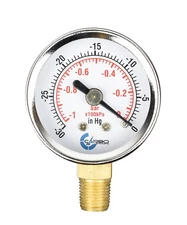Your diagram indicates that you want to do fractional distillations at low pressures.
I had such dreams too.
If there is a specific reduced pressure distillation that is very important to you, then go for it,
but I recommend that you work at atmospheric pressure only until you have a lot more practical experience,
by that time you will have a much better appreciation of what is required for your circumstances.
Not a criticism, just advice.
I'm still learning the hard way (mostly by failures) but I'm not in a hurry.
...........................
PS vacuum pumps for less than 10mmHg need not be expensive,
A peristaltic pump can be used for medium vacuum, low pumping rate applications
( my YT video https://m.youtube.com/watch?v=gGtYlS1ihbE)
A generic rotary pump (HVAC, car air-con service type) for medium vacuum at higher pumping rates
(either can give a gauge reading of - 1 Atmosphere)
I've not yet measured the actual minimum pressure of my rotary 
High vacuum is only for the few.
[Edited on 6-2-2023 by Sulaiman] |













